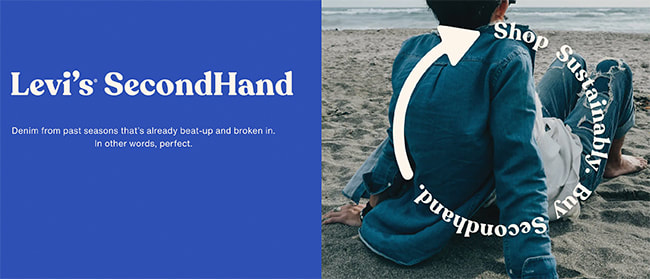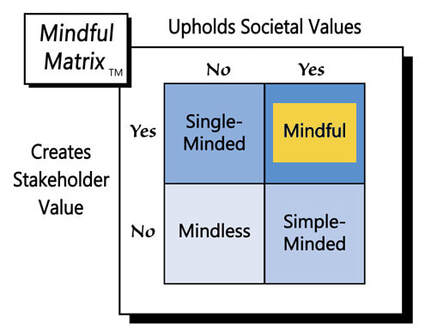author of Honorable Influence - founder of Mindful Marketing
Scanning my marketing news feeds a couple of months ago, a headline caught my eye, “Letter from Gen Z: Why thrifting is the future of fashion.” Thinking it was a bold prediction, I saved the article to discuss with my fall classes. The semester started, I shared the piece, and I’m stunned how passionate so many students are about thrifting!
However, on the first day of Personal Selling class, before I even mentioned the article, I asked each person to ‘sell us on something important to you.’ With great enthusiasm, a student named Brooke shared how much she enjoyed thrifting. Her tremendous passion for the practice was obvious to all, and very surprising to me.
My impression had long been that shopping for secondhand items was something mostly people on very limited budgets did out of necessity, to save money. Similarly, those who did frequent aftermarket sellers certainly wouldn’t brag about what they’d bought. Apparently, that stigma has subsided, and college students, some of whom come from affluent families, are among those most active in propagating thrifting’s new-found popularity.
To get a better picture of thrifting behavior among college students, I created a brief online survey that I shared with my four classes; about 70 students completed it. The results revealed some surprising behavior, for instance:
- 70.4% of students had purchased used clothing three or more times, and 54.9% had done so seven or more times.
- The most likely places to purchase used clothing were traditional thrift stores like Goodwill and Salvation Army (39.4%), followed by retailers and brands that sell both new and used clothes, such as H&M and Levi’s (33.8%), then consignment stores (22.5%), and finally flea-markets (7.1%).
- The strongest motivations for buying used clothing were cost (49.3%), followed by fashion (16.9%), then desire for old/vintage (11.27%), then impact of influencers (2.8%), and last environmental concerns (1.4%).
Before the survey, I didn’t think that so many college students were actively thrifting. To my surprise, only 9.9% of those who responded, said they’ve never purchased used clothing. I was also surprised that the places they thrift are rather evenly distributed.
Comparing the two different findings, it’s remarkable that the percentage of those who are very likely to frequent even the least popular thrifting place, flea-markets (7.1%), is not much lower than the portion of people who have never thrifted (9.9%).
On one hand, seeing cost emerge as the top motivator for thrifting was not surprising; however, I had expected its percentage to be even higher, e.g., 90% or more—again, I always thought that saving money was the only reason people purchased used clothing.
As it turns out, the desires to be fashionable and to own old/vintage clothing were also very compelling. Along those lines, I realized that my simple survey failed to ask about what may be one of the most important motivations!
At the end of the survey, an open-ended question invited respondents to share any other thoughts about thrifting. Seventeen students seized the opportunity and offered responses that included the following:
- “I love it so much!”
- “I love to thrift and over half of my closet is thrifted.”
- “Very cheap way of finding trendy clothes”
- “It’s how I get 90% of my clothes.”
- “I love that I can find articles of clothing that no one else is likely to have. Thrift finds are one of a kind. I also buy clothes from stores like Target, but my purchases [there] are not as unique [emphasis added] because other people have the ability to buy the same thing. Thrifting grants me a more unique [emphasis added] wardrobe!”
- At least 50% of my clothes are thrifted, I absolutely love thrifting - both because it limits waste in the fashion industry and because it’s fun! [emphasis added]
The last two comments contained two words that were both eye-opening and full of marketing implications:
1) Unique: I remember, not long ago, when young people wanted to look like everyone else. To be one of the few people who didn’t have the popular brands of sneakers or jeans was often an ostracizing experience.
Now it seems that many Gen Zers want to own clothing that not everyone else is wearing. Moreover, items that are one-of-a-kind, like those that can be found through thrifting, are even better, as they help express individual identity, which mass marketed products can’t easily accomplish.
2) Fun: In my thrifting survey, I kind of included a question about wanting unique clothing (“old/vintage”), but I completely overlooked the idea that members of Gen Z thrift because they enjoy the thrill of the experience.
For many, thrifting is a kind of treasure hunt in which they may or may not know exactly what they’re looking for, and what they find may be a complete surprise. It’s exciting for almost anyone to come across something special that others are unlikely to locate.
Both of these motives, as well as some of the others, are instrumental to the thrifting behavior of Brooke, introduced above, who has been buying secondhand products for 3-4 years and goes thrifting once every two or three weeks. In those outings, Brooke has found used bargains on everything from American Eagle clothing, to Ugg boots, to Vera Bradley bookbags.
Cost is certainly a motivation for Brooke; in fact, she says she loves saving money and showing people the great buys she gets for ¾ of regular retail prices. She also says that she now has “a hard time spending full price on clothing at retail stores.” However, Brooke also enjoys the excitement of thrifting:
“I get a thrill in not knowing what I’m going to find. You don’t know if you’ll walk in and find brand new Nike shoes for $40 or Lululemon leggings for $30, and that’s the fun in thrift shopping, the unknowns.”
There’s little question that many members of Gen Z enjoy thrifting for a variety of reasons, but what can/should marketers do with that consumption behavior? After all, most clothing brands are in the business of selling new clothes, not used ones. Some, however, have found ways to do both, and apparently make money.
One of those brands is the iconic blue jean maker Levi’s, which has made an entire enterprise out of buying back and reselling its used denim. The company runs a well-developed website, Levi’s SecondHand where it resells its classic jeans, jean shorts, denim jackets, and more.
Even though they’re used, the items aren’t cheap. For instance, the site sells preowned men’s original fit 501 jeans for $38. On a recent Labor Day sale, Macy’s offered the same jeans new for $41.70, or less than $4 more. Levi’s used product site also sells Vintage 501 Shorts for a pricey $78 a pair.
However, a webpage that describes Levi’s SecondHand explains why someone would want to pay a premium for preowned: “Denim from past seasons that’s already beat-up and broken in. In other words, perfect.”—That sentiment is very similar to the survey finding mentioned above about generation Z liking clothes that are old, vintage, and unique.
The company also touts several other advantages of SecondHand, especially sustainability:
“If everybody bought one used item this year, instead of buying new, it would save 449 million pounds of waste.”
“Levi’s SecondHand keeps coveted pieces in circulation. It’s all about connecting people to timeless styles they otherwise may not have found, and most importantly, saving clothing from going into a landfill. Old denim has never looked better.”
A big question that remains is if selling secondhand is sustainable for Levi’s. Sure, used denim may be what consumers want and what the environment needs, but can the company make money in the clothing aftermarket? If not, the program has little potential.
Levi’s SecondHand isn’t yet a year old, so longevity is still not the best indicator. However, if the company is successful selling some used products for only a few dollars less than they sell for new, and others for even more, it seems likely that the firm, free from manufacturing costs and with relatively little added overhead, must make a healthy margin on each piece and turn a profit on the program as a whole. Interestingly, over the past year Levi’s stock price has increased significantly, from $12/share on September 21, 2020, to $26.50/share on September 6, 2021.
Can other clothing companies pull off a secondhand program like Levi’s? Few have the history and brand equity that the iconic jean maker enjoys; however, consumers’ appetite for used clothing and the favorable cashflow suggested above serve as an invitation to other suppliers. Furthermore, the fact that those who have entered the aftermarket include clothing retailers J.C. Penney, Macy’s, Madewell, and Nordstrom, as well as the furniture behemoth IKEA, suggests the viability of selling secondhand.
When you think about it, it’s not unusual for manufacturers and new product retailers to sell used products. Auto dealerships have been doing so for a century or more. Part of the reason people are willing to pay so much for new cars is that they know when they’re done driving them, someone else will buy them. Whether it’s Levi’s or Lexus, high resale value is a hallmark of a strong brand.
Still, an important moral issue remains, which a second member of Gen Z brought to my attention. Katie, also a marketing student of mine, helped me see that consumers have a responsibility to ‘thrift ethically.’ Inspired by a variety of posts she’d seen on Instagram and a visit to a thrift store in Colorado, Katie suggested that consumers shouldn’t shop in “low-volume, high-populated areas” and that they should avoid patronizing secondhand places “outside of their fiscal demographic."
The overarching reason for these sensitivities is that some desirable-brand item that we buy in a thrift shop as a ‘little luxury’ might be the same item that a more impoverished person would buy out of necessity. As consumers, we are often accustomed to there being plenty of products for everyone, but Katie reminded me that what we buy secondhand may be taking something away from someone who needs it more.
Of course, not every product lends itself to a profitable aftermarket, but many do. Consequently, for the sake of environmental, financial, and social stewardship, more companies and consumers should consider how they might responsively market and purchase preowned products. Whether new or used, items that offer value to buyers and profit to sellers, can be considered “Mindful Marketing.”
Learn more about the Mindful Matrix.
Check out Mindful Marketing Ads and Vote your Mind!




 RSS Feed
RSS Feed